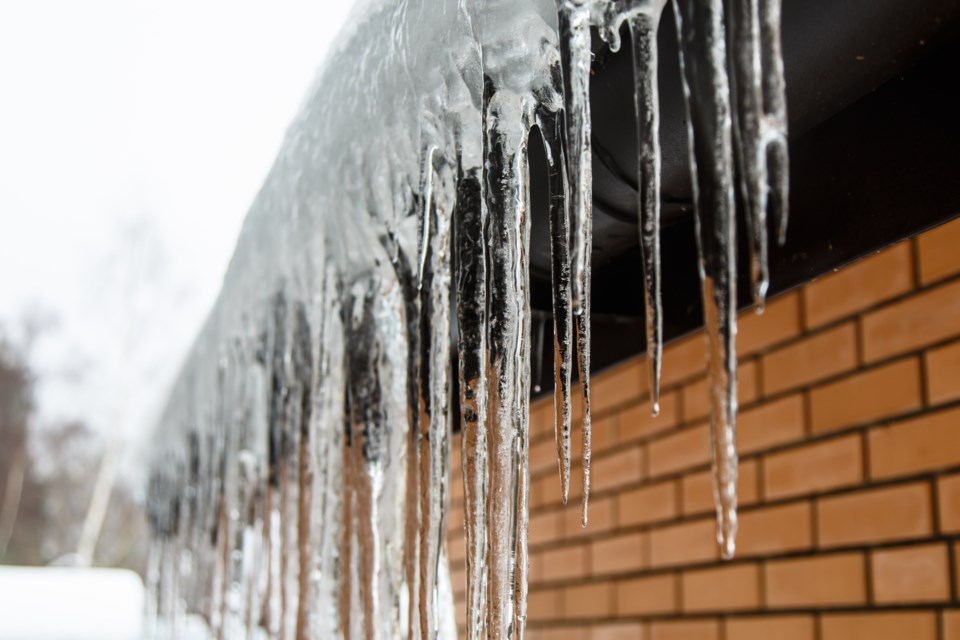If you walk around any neighbourhood in the wintertime, you are bound to see icicles dangling around the edges of homes and buildings.
Real estate broker Chris Keleher, of the CKTeam in Collingwood, said while many people see them as “beautiful,” they mean something else entirely when you see them around the perimeter of your home.
“Icicles mean you can see how much heat loss is coming up and out of the home through the attic and through the insulation,” Keleher said.
The heat that is escaping, he said, melts the snow on your roof which drips down and creates icicles. This means there is inadequate insulation and/or ventilation in the attic. More importantly, Keleher said people may not realize how much these icicles are actually costing them on their hydro or gas bill, which could “double in the winter” as a result of this heat loss.
The benefits to homeowners ensuring their attic is properly insulated
There are many people who rarely if ever, go into their attic. However, you should have the insulation in your attic inspected at least once a year to see how it is functioning as proper insulation, ventilation and airflow is akin to how efficient your heating (and cooling) systems run.
“People don’t realize that insulation lessens over time and you have to re-up the ante on it sometimes, and some homes were never insulated,” said Keleher, adding that older homes especially need to have the insulation updated.
According to Naima Canada, 80 per cent of Canadian homes are under-insulated and having your insulation inspected to determine if you have the correct insulation, or the correct amount, will not only help you to maintain a consistent and comfortable temperature throughout your home but also lower your energy bill.
“You will immediately see a difference in your hydro or gas bill, or however you are heating your house, and those icicles will disappear,” Keleher added.
Knowing how well an attic is insulated – or not – isn’t just useful information for homeowners, but also for those who are on the market for a new home. If you are wondering how the insulation is functioning in the home you are interested in purchasing, Keleher said, you can skip seeing the attic entirely if you see icicles anywhere around the roof’s perimeter.
“If you see a home that has icicles from the front of the house to the back, on all sides, those inhabitants are having complete heat loss,” he said. “Other houses, you may see icicles just on one side of it or on one section only, which means maybe the insulation has been pushed away or something’s happened in the attic and you should check it out.”
If this is the case, Keleher suggests using this deficiency as a negotiation point. For example, you could ask the seller if they would include an attic inspection as a condition of sale, and if the attic has to be re-insulated or insulated entirely, you could request a price reduction based on the amount it’s going to cost to insulate the home properly.
Keleher said, whether you’re a homeowner or a potential homebuyer, it pays to have the problem taken care of. “It may cost you, say, $500 to insulate your roof, but in one winter you will have made that investment back,” adding that if the problem is left, it will just mean a continual loss of money and wasted energy.
Ice Dams are another indication of heat loss through your attic
While ice damming is different than icicles forming, what is true of both are that they are an indication of inadequate insulation or improper ventilation in your attic. However, ice dams have the potential to create more significant damage to your home.
Keleher said ice damming occurs when there is significant heat loss in the area of your roof where two angles meet, like a slope, and the melting snow from your roof ends up pooling and freezing in your eavestrough, forming an ice dam. This creates those giant icicles you may see that are typically in the corner of a house or building.
Not only will the ice dam block the flow of your eavestrough, but it could potentially damage or tear the gutters from your home from the sheer weight of it. If the problem isn’t fixed, it can eventually damage your roof, get under your shingles, and the water, with nowhere to go but inwards, could leak into your home causing water damage to the interior of your home.
Contact your local real estate specialist to learn more about what warning signs to look for when searching for your next home.
